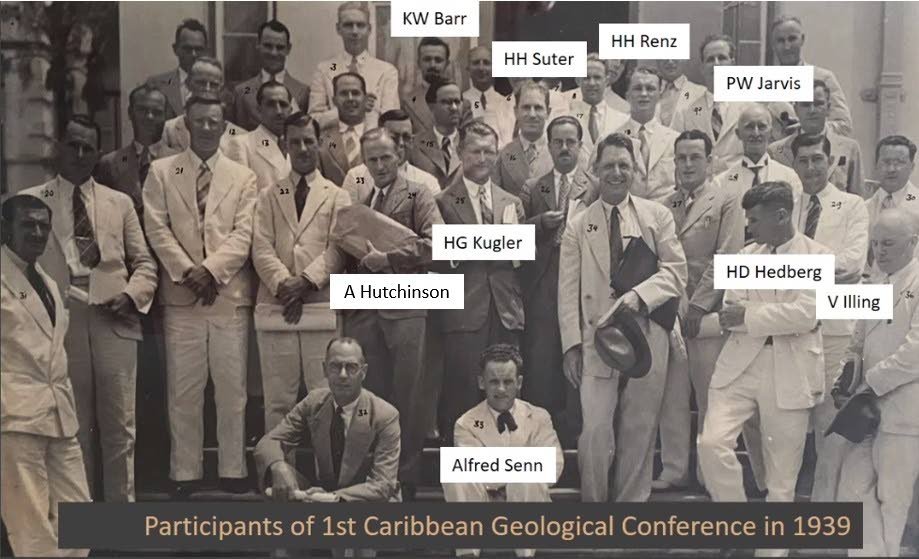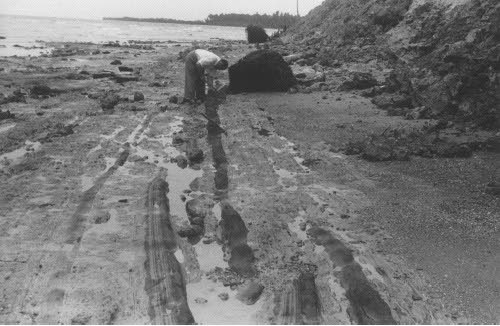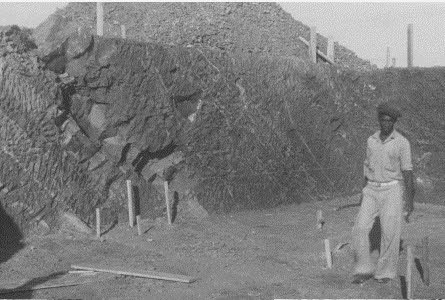A trip to the past: Life, legacy of Dr Arthur Hutchinson

DR SAM MEDWORTH
PROFESSIONALS often aspire toward opportunities that can facilitate growth, honing skill sets in their respective fields.
Different experiences can offer more than just technical competencies, but development of leadership qualities and emotional intelligence required for future roles.
This is certainly true in the field of geoscience. It is often said the best geoscientists work in different basins; this was indeed the life of Dr Arthur Hutchinson, who worked as an exploration geologist in the 1930s-40s, spending some of that time in TT.
We invite you on a trip to the past as we explore the life of Hutchinson and his contributions to TT's geology.
Our story begins in the present. Hutchinson’s third cousin once removed, Dr Sam Medworth. Though a medical doctor by profession, Medworth always had a keen interest in geology, and there is little wonder why he joined the Bath Geological Society in the UK.
Hutchinson, also known as "Hutch," was a welcome visitor at Medworth’s father’s childhood home. Hutchinson was 13 years older than Medworth’s father and was like a young uncle and hero to him. Medworth was able to get information about Hutchinson from his father and Arthur Chater (Hutchinson’s nephew), who had in his possession a box of his papers and photos passed on to him from his mother (Hutchinson’s sister Margaret Chater). It is this information that forms the basis of our historical journey through the life of Hutchinson.
Hutchinson was born in 1902 in Aberdeen, Scotland. He attended Aberdeen University in 1922, where he completed his major in geology with minors in zoology, chemistry and other science subjects. In 1929, he completed a PhD at Cambridge, where he researched the complex metamorphism of the Neoproterozoic Deeside Limestone.
In addition to fieldwork, his research involved examining around 700 thin sections of rock under the microscope. At Cambridge, he continued to pursue his love for the outdoors with extracurricular activities such as Alpine climbing with another student, Lawrence Wager, who would go on to be part of the 1933 British Everest Expedition, reaching just shy of 300 metres from the summit.
After an assignment in Sarawak on the north coast of Borneo, Southeast Asia, in 1933, Hutchinson was stationed in TT.
At that time, TT's oil industry had a much longer history than his previous assignment, with the first well being drilled near the Pitch Lake in 1855, over sixty years before the first well in Sarawak.
Rotary techniques were already in use by 1903. Crude oil was being shipped out by tanker by 1910, but the first Shell refinery was opened in 1912 at Point Fortin and rapidly increased in capacity.
In 1912, when the decision was taken to change the Navy to oil burning, TT had the only oilfields in the British Empire.
In TT, the geology was complicated but better understood. The use of foraminifera to identify and correlate strata had been developed since 1917.
There was also a railway, and skilled and unskilled labour was more readily available. In addition, there were other oil exploration companies on the island such as Trinidad Leaseholds Ltd and Standard Oil (Esso-US). Most of Hutchinson's work was in the Penal-Barrackpore and Ortoire areas in the southern basin.
Whilst prospecting in the field, he would pretend to be interested in botany, so as to not give away what he was doing and raise suspicion or land prices.
Initially, he used similar working methods employed during his time in Sarawak, to work out the basic geology by examining local outcrops and oil seeps where they occurred. Surveying pits were also dug to examine the geology.

The reservoir of interest in these blocks was the Herrera sandstone, deposited as turbidites in the foreland basin in the early Miocene and, subsequently, incorporated in a fold and thrust belt from the mid-Miocene. Around the mid-1930s, seismic surveys and aerial photography started to be used. Hutchinson’s geological findings were instrumental towards UBOT's drilling programme in the Penal-Barrackpore area, which was initiated in 1936. The first well, Penal 1, reached a total depth of 5,570 ft and penetrated the Cipero formation but narrowly missed the Herrera sandstone.
However, significant oil seeps in the area prompted continued interest in finding the reservoir.
In 1938, the Penal 23 well was drilled to 4,656 ft and produced 500 bpd of an intermediate oil (29° API) making this the first oil discovery in the Herrera sandstone.
In July 1936, he sailed to the UK on holiday and took a trip to the infamous Berlin Olympics. He returned to TT in November of that year and the following year, bore witness to strikes and riots during the labour uprising led by Tubal Uriah “Buzz” Butler. Oil installations were targets, and expats were organised into civil defence brigades. The seismic crew had to be careful to hide their explosives when they went out into the field, lest they be stolen and used against the oil companies.
In 1939, he was heavily involved with Dr Hans Kugler and assisted in hosting the first geological conference in TT, for which he arranged six days of field trips all over the island.
Additionally, he presented a paper titled, Jurassic Ammonites in the Northern Range of Trinidad. This paper was based on his discovery of perisphinctes transiformis ammonites in unmetamorphosed limestone exposed when the Hollis Reservoir Dam was being constructed from 1934-1936. These ammonites were confirmed by the Natural History Museum in Kensington, London, as being mid to late Jurassic in age. His discovery was a significant find, as Kugler’s previous hypothesis set the oldest rocks present in TT as Cretaceous.
Following more years as a thriving professional, on August 6, 1949, he set out from his hotel in Tenby, exploring carboniferous limestone along the Pembrokeshire coast path, and did not return as he, unfortunately, lost his life in a climbing accident. His obituary by his university friend and fellow geologist, Jim Smith, said, though he would be quite missed, "if it had to be, he would have wished for no other end, with the sun overhead, the sea at his feet, his hammer in his hand."

Hutchinson showed what life was like for a professional petroleum exploration geologist in the decades of the 1930s and 1940s.
He made tremendous contributions to a wealth of knowledge related to TT geology and oil exploration in the southern basin.
His field mapping techniques, although used shy of a century ago, remain relevant today.
Indeed, surface geology will always play a critical role in exploration and should be used in tandem with other forms of data (well, seismic, basin models) in the regional understanding of an area and subsequent prospect evaluation.
TT’s paralympic swimmer, Shanntol Ince, once said, "Embrace the beauty of every opportunity we have been given."
It is, therefore, important that through our careers, we use every opportunity to learn as we aspire to make meaningful contributions wherever we are.
This article was compiled and edited by Dr Adrian Tuitt and Kami Allong, and submitted by the Geological Society of Trinidad and Tobago.

Comments
"A trip to the past: Life, legacy of Dr Arthur Hutchinson"